Occupational Safety Training in Waste Collection
99,000 ₫
Note: The above price is calculated for one person, the price may fluctuate depending on the number of trainees participating in the course and the movement of the market. For more accurate pricing support, please refer to the quotation table or contact our consulting staff directly.
The Waste Collection Safety Training course is a program that provides Group 3 occupational safety knowledge. The course will raise awareness of accident prevention during work for trainees. Accordingly, the occupational safety training content is closely aligned with Article 18 Decree 44/2016/ND-CP.
Table of Contents
Toggle1. Overview of waste collection activities
a. What is waste collection?
- Waste collection is the process of collecting, transporting, and treating various types of domestic and industrial waste. It is a crucial step in the waste management process, helping to ensure a clean environment and protect community health.
- The tasks in the waste collection process include placing garbage cans at appropriate locations, collecting waste from the cans and putting it into garbage trucks, transporting it to waste treatment sites, and treating it by various methods such as incineration, recycling, or landfilling.

b. Types of tools and equipment to support waste collection
Tools to support waste collection include:
- Trash cans: An indispensable part of the waste collection process, they come in many different sizes and designs to suit usage needs, from small trash cans for household use to large ones for public areas.
- Trash carts: Carts are designed to transport trash cans from one place to another, especially in densely populated areas or construction sites. There are many different types of carts to suit each purpose, they can have single or double wheels, and can be designed to move on flat or uneven terrain.
- Trash bags: Disposable containers for garbage, usually made of plastic or fabric. Trash bags often come in many different sizes and colors, suitable for each type of waste to be collected and treated.
- Trash can lifters: Used to lift and move trash cans when necessary.
- Garbage compactors: Used at waste treatment stations to compress garbage into blocks for transportation or disposal.
- Automatic waste sorting equipment: Used to automatically sort waste, helping to minimize the time and effort of waste collectors.

c. Typical businesses in waste collection activities
There are many typical businesses in waste collection activities in Vietnam, including:
- Hanoi Urban Environment One Member Co., Ltd. (URENCO): URENCO is one of the leading enterprises in the field of waste collection, treatment, and recycling in Hanoi. The company has a synchronous and modern waste collection system, using the most advanced treatment and recycling technologies.
- Ho Chi Minh City Urban Environment Co., Ltd. (CITENCO): CITENCO is one of the typical enterprises in the field of waste collection in Ho Chi Minh City. The company has a synchronous and modern waste collection system, using the most advanced treatment and recycling technologies.
- Da Nang Urban Environment Co., Ltd. (UREN Da Nang): UREN Da Nang is one of the leading enterprises in the field of waste collection, treatment, and recycling in Da Nang. The company has a synchronous and modern waste collection system, using the most advanced treatment and recycling technologies.
- Binh Duong Environment JSC Co., Ltd. (Binh Duong Environment JSC): Binh Duong Environment JSC is one of the typical enterprises in the field of waste collection in Binh Duong province. The company has a synchronous and modern waste collection system, using the most advanced treatment and recycling technologies.
- Hai Phong Urban Environment Co., Ltd. (URENCO Hai Phong): URENCO Hai Phong is one of the leading enterprises in the field of waste collection, treatment, and recycling in Hai Phong. The company has a synchronous and modern waste collection system, using the most advanced treatment and recycling technologies.

2. Overview of the occupational safety training course for waste collection
a. What is occupational safety training for waste collection?
- Occupational safety training for waste collection consists of sessions that equip workers with awareness on how to prevent occupational accidents. Accordingly, those who directly work in waste collection belong to group 3.
- The occupational safety training course will help workers recognize and prevent dangers, and limit the risks of occupational accidents during work.
REGISTER FOR OCCUPATIONAL SAFETY TRAINING SERVICE
b. Training duration
Initial safety training duration
- The total training duration is at least 24 hours, including the test time.
- 8 hours of theory on policies and laws regarding occupational safety and health
- 8 hours of theory on basic knowledge of occupational safety and health
- 4 hours of theory on specialized training content
- 2 hours of practice on specialized training content
- 2 hours of final theoretical test at the end of the training course
The safety training center will distribute the time into several training sessions depending on the scheduling for employees. But usually, there will be 6 training sessions, the course will take place over 3 days, provided that the manufacturing business can arrange continuous study time.
Periodic safety training duration
- Before the occupational safety card expires, if workers want it to be reissued, they must undergo a periodic occupational safety training course, with the periodic safety training duration being at least 50% of the initial safety training duration.
Explanation: The total periodic occupational safety training duration is at least 12 hours, including the test time. After completing the periodic training course and passing the test, workers will have their occupational safety card reissued or renewed.
c. Content of the training course
| No. | TRAINING CONTENT | TRAINING DURATION (HOURS) | |||
| Total | Of which | ||||
| Theory | Practice | Test | |||
| I | System of policies and laws on occupational safety and health | 8 | 8 | 0 | 0 |
| 1 | Overview of the system of legal documents on occupational safety and health. | 6 | 6 | ||
| 2 | System of technical standards and regulations on occupational safety and health. | 1 | 1 | ||
| 3 | Specific regulations of state management agencies on occupational safety and health when constructing new, expanding, or renovating works, facilities for manufacturing, using, preserving, storing, and inspecting machinery, equipment, materials, and substances with strict requirements on occupational safety and health. | 1 | 1 | ||
| II | Basic knowledge of occupational safety and health | 8 | 8 | 0 | 0 |
| 1 | Basic knowledge of hazardous and harmful factors in the workplace. | 4 | 4 | ||
| 2 | Methods for improving working conditions. | 1 | 1 | ||
| 3 | Safety culture in manufacturing and business. | 1 | 1 | ||
| 4 | Rights and obligations of employers and employees; policies and regimes on occupational safety and health for employees; functions and tasks of the occupational safety and health network. | 1 | 1 | ||
| 5 | Occupational safety and health regulations, signs, safety and health signs, and the use of safety equipment, personal protective equipment; professional skills, first aid for occupational accidents, and prevention of occupational diseases. | 1 | 1 | ||
| III | Specialized training content | 6 | 4 | 2 | 0 |
| General knowledge about machinery, equipment, substances that generate hazardous and harmful factors; analysis, assessment, management of risks to occupational safety and health, safe work procedures with machinery, equipment, and substances that have strict requirements on occupational safety and health. | 6 | 4 | 2 | ||
| IV | Test of occupational safety training content at the end of the training course | 2 | 2 | 0 | 0 |
| Total | 24 | 22 | 2 | ||
See more training content of the 6 groups
d. Occupational safety card
After completing the occupational safety training course and passing the test, the worker will be issued an occupational safety card (in practice, also called the group 3 occupational safety certificate).
Specifically, the group 3 safety card will clearly show information such as: full name, date of birth, specific job, and working environment. It also includes the training duration, a red seal, and a signature confirming completion of the training course.
According to the regulations for issuing safety cards as clearly stated in Clause 2, Article 24 of Decree 44/2016/ND-CP, there are two cases:
- In the case where the employer and the employee have a labor contract, the employer must sign, seal, and laminate the safety card for the trained person in group 3 after they have completed the training course from a training unit and passed the test.
- In the case of freelancers, seasonal workers, or those without a labor contract, the training unit must sign, seal, and laminate the safety card for the worker after they have completed the training course from the occupational safety training unit and passed the test.

3. Identifying hazards in waste collection activities
Some of the hazards in waste collection activities include:
- The risk of injury during the transportation and treatment of waste is very high, especially if the waste contains sharp materials such as metal, glass, thorns, claws, and toxic substances such as chemicals.
- People working in this field can be exposed to many types of toxic substances, including chemicals, toxic gases, dust, and bacteria. Without appropriate protective equipment, workers can be poisoned by inhalation, skin contact, or ingestion of toxic substances.
- People working in the waste collection field must work in harsh environments, with a risk of occupational accidents. For example, workers can be hit, crushed, fall from a height, or be injured during the process of transporting waste.
- Waste such as oil, metal scraps, and toxic substances can cause fires and explosions. Direct contact with these substances can endanger the lives and property of workers as well as the surrounding community.
- People working in the waste collection industry are at risk of contracting infectious diseases if they come into contact with medical waste or waste from animals or sick people.

4. Safety measures in waste collection activities
Safety measures in waste collection activities include:
- Equipping protective gear: Such as hard hats, safety glasses, masks, gloves, reflective vests, safety shoes, etc., to help protect staff from dangers from waste such as toxic substances, sharp objects, or insects, etc.
- Using support equipment: Air compressors, chainsaws, suction pumps, oxygen tanks, etc., help staff collect and treat waste more safely and effectively.
- Training staff: All employees involved in waste collection activities need to be trained in occupational safety on safety procedures, accident prevention measures, and how to operate equipment.
- Waste management and treatment: Organizing the transportation, treatment, and recycling of waste in accordance with legal regulations, ensuring safety for employees and the public, and minimizing the impact on the environment.
- Equipment inspection and maintenance: Ensuring equipment is inspected periodically to ensure safety during use, and maintaining and replacing damaged equipment to avoid accidents.
- Using safe means: Using safe means such as elevators, scaffolding, safety ropes, etc., to avoid accidents when collecting and treating waste in high areas.
- Adjusting waste collection times: Organizing waste collection at appropriate times, to avoid causing traffic disruption and ensure the safety of collection staff.
- Periodically organizing labor environment monitoring in factories and enterprises, collecting and analyzing harmful factors for workers, thereby adjusting to reduce the level of harm to prevent occupational diseases for them.
5. Types of accidents when collecting waste
Some types of accidents that can occur when collecting waste include:
- Accidents with toxic substances: If protective gear is not worn correctly, toxic substances can harm the health of waste collectors.
- Accidents with knives, needles: Waste collectors often have to use knives and needles to cut and peel materials. If not used correctly, these tools can cause injury or cuts to the user.
- Accidents with machinery: The machinery used in the waste collection process such as trucks, excavators, grinders, etc., can cause serious accidents if not used correctly.
- Accidents from working in a toxic environment: Waste collection can expose workers to toxic environments, which are harmful to their health. Toxic environments can include toxic gases, dust, high humidity, noise, strong light, and high temperatures.
- Accidents related to hazardous waste: Hazardous waste such as toxic substances, preservatives, and flammable/explosive substances can cause serious accidents if not handled correctly.
6. Benefits of occupational safety training for waste collection
An Toan Nam Viet provides businesses with the following great benefits after completing occupational safety training courses as stipulated in Decree 44/2016/ND – CP on occupational safety and health work, for companies, factories, and businesses.
- Employees can recognize the potential risks of occupational accidents and thus have preventive measures to avoid occupational accidents.
- Your business can establish risk prevention measures in the manufacturing, operation, and maintenance processes.
- Reduce costs when there is a risk of occupational safety loss.
- Uninterrupted manufacturing will help increase labor productivity and product quality.
- Comply with occupational safety laws, avoiding legal risks.
- Create credibility and professionalism in all aspects, thereby elevating the brand for your business.
The training courses of Nam Viet are a solution to prevent and combat external factors affecting individuals so that they can avoid dangers that can lead to injury or, more seriously, death.
REGISTER FOR OCCUPATIONAL SAFETY TRAINING SERVICE
7. Customer feedback after completing the training course
An Toan Nam Viet has many years of experience in the mission of accompanying many businesses in Vietnam in general and in the southern provinces in particular. And that responsibility is something very valuable to Nam Viet, which is why the Occupational Safety Training work of Nam Viet is increasingly focused on becoming more professional. The motivation for An Toan Nam Viet to grow strongly to the present comes from the positive feedback and suggestions from businesses. Below is the feedback from our partners we have served.
Bac Nam E&C Construction Investment Joint Stock Company
“The first time I used the service at An Toan Nam Viet, I was very surprised by the enthusiastic 24/7 support of the team of consultants. The class organization was very quick and convenient for our company, thank you very much for Nam Viet’s service!”
Hoa Dat Construction and Trading Joint Stock Company
“Nam Viet’s service has helped us a lot in simplifying occupational safety and the task of completing safety records for our work process. The team of consultants is enthusiastic and responds promptly to our questions. 5 stars for Nam Viet”
See more customer interviews after using the service of An Toan Nam Viet
8. Occupational Safety Training Capability of An Toan Nam Viet
An Toan Nam Viet is a reputable and quality occupational safety training center in Vietnam today. With occupational safety training sessions continuously taking place at manufacturing workshops, factories, or construction sites across the country (63 provinces and cities in Vietnam).
REGISTER FOR OCCUPATIONAL SAFETY TRAINING SERVICE
License for occupational safety training
- An Toan Nam Viet has been inspected and certified by the Department of Occupational Safety of the Ministry of Labor – Invalids and Social Affairs as being qualified to conduct occupational safety and health training. This further strengthens our capability in occupational safety training.

Documents and lectures
- Before the occupational safety training documents are put into the occupational safety training courses, they have been reviewed and approved to ensure that the lectures are always correct in terms of knowledge and effective when applied.
- The teaching method of the instructors is synchronized with the teaching standards of An Toan Nam Viet, which is a method that experts in occupational safety and health training have researched and summarized during the teaching process to bring the highest knowledge acquisition efficiency to students.
Facilities
- Controlling the factors in the classroom that affect the training process will increase the teaching performance and the effectiveness of knowledge acquisition for students.
- The facilities supporting our training course always have a spacious classroom that meets standards for area, lighting, training equipment, etc.
9. Reputable and quality national safety training center
At An Toan Nam Viet, we always prioritize our professional dedication to occupational safety training. For us, imparting self-protection knowledge to workers so they have a safe foundation on their livelihood path is a contribution to nation-building.
To ensure effective training, we prepare carefully and meticulously even the smallest details. From preparing tools, equipment, and teaching aids to textbooks, documents, sound, and lighting.
Our occupational safety training instructors are experts with many years of experience in the field. They even have research projects on identifying dangers in all professions and how to prevent them.
The instructors’ lectures are distilled from practical experience and conveyed in a vivid and easy-to-understand way for the workers. These factors help workers feel comfortable during their study time and absorb our teaching knowledge well. Of course, the knowledge conveyed always adheres closely to Decree 44/2016/ND-CP.
From there, they grasp many measures to prevent danger and protect themselves. They also apply them in the most suitable way in their actual work.
Our safety training center is proud to be a reputable and professional provider of occupational safety training services with the following advantages:
- Competitive training costs but training quality is still ensured.
- Flexible training schedule based on the manufacturing situation of the company and business.
- Quick and legally compliant procedures for issuing occupational safety training certificates.
- Training instructors are those with many years of experience in the profession.
- The classroom is controlled for factors affecting the training process, increasing teaching productivity and the effectiveness of knowledge acquisition for students.
- The lectures are compiled to be suitable for occupational safety work at businesses.
- An Toan Nam Viet works dedicatedly and professionally to support customers accurately and as quickly as possible.

10. Refer to more occupational safety training documents for waste collection
- Occupational safety training documents set
- Occupational safety documents for the waste collection industry
- Occupational safety training test
1 review for Occupational Safety Training in Waste Collection
No comments yet

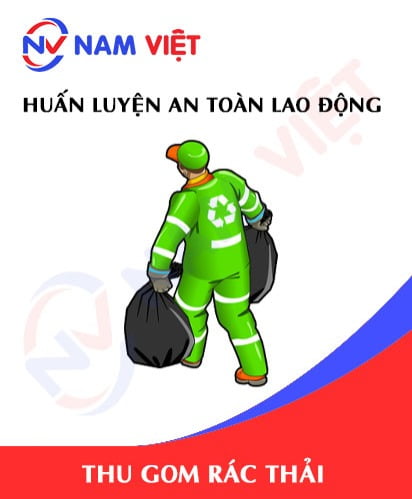
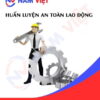
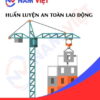



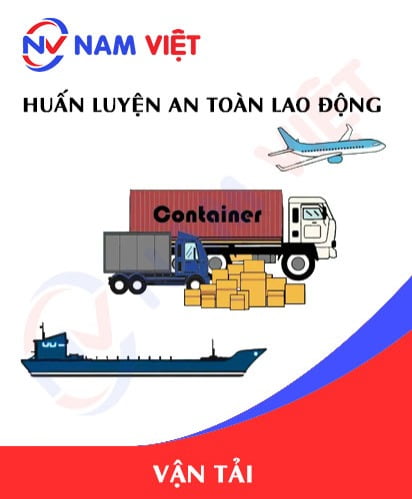
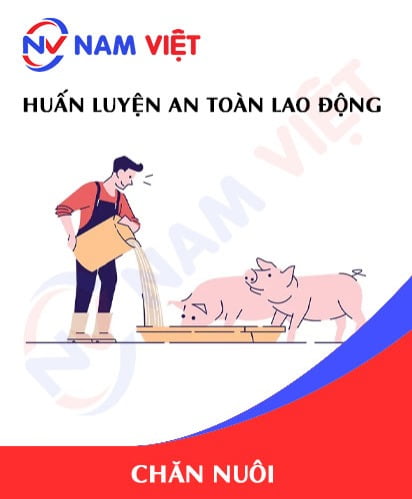
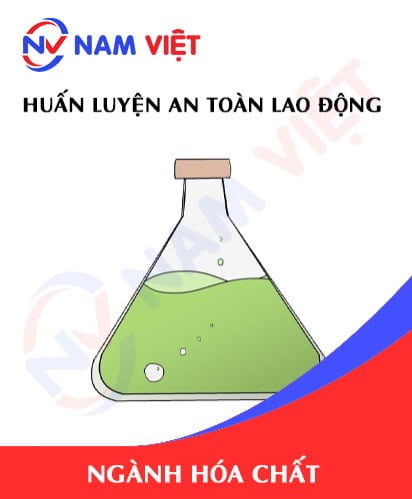
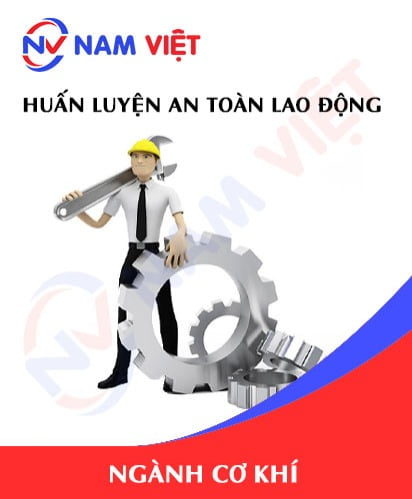
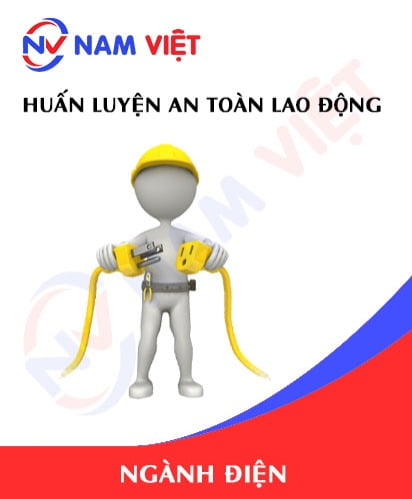
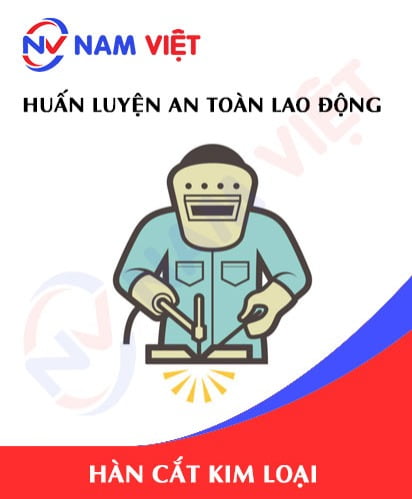
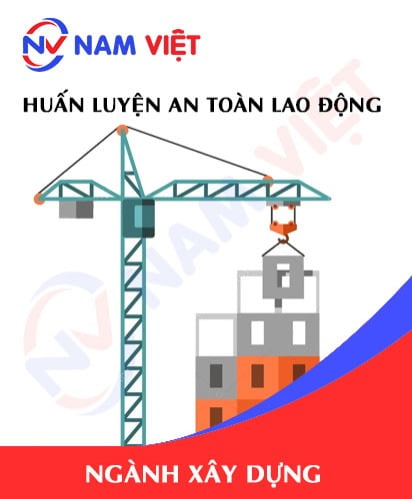
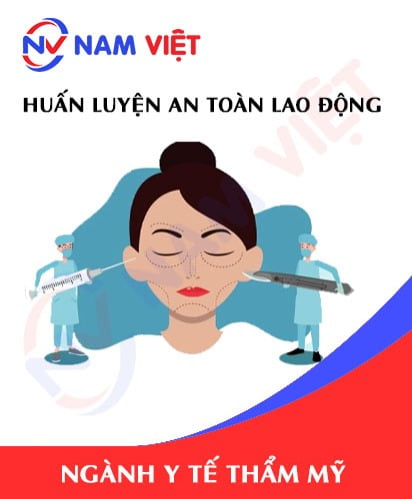
phanminhhang341
Trung tâm huấn luyện an toàn lao động chuyên nghiệp ở Việt Nam nha